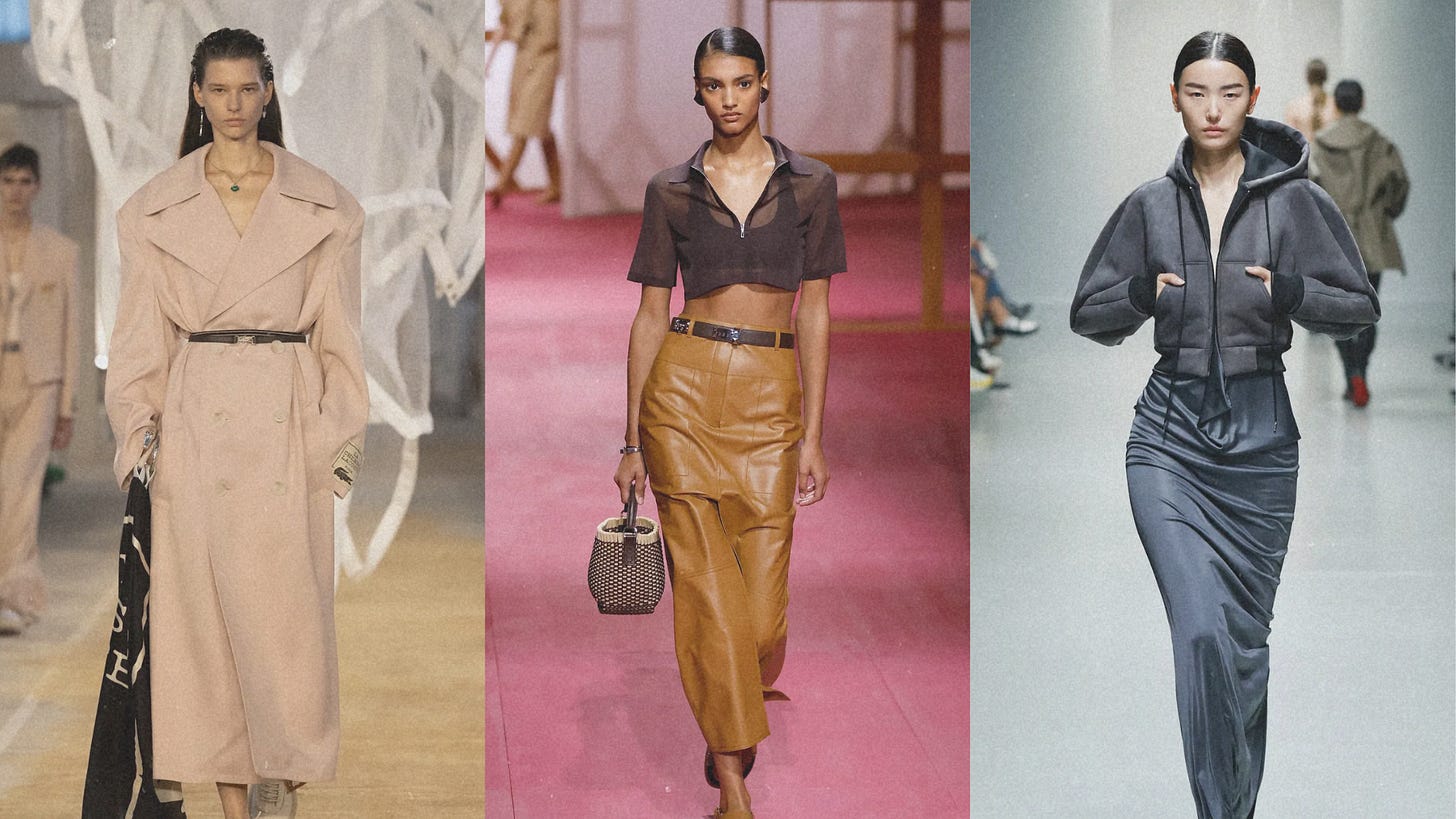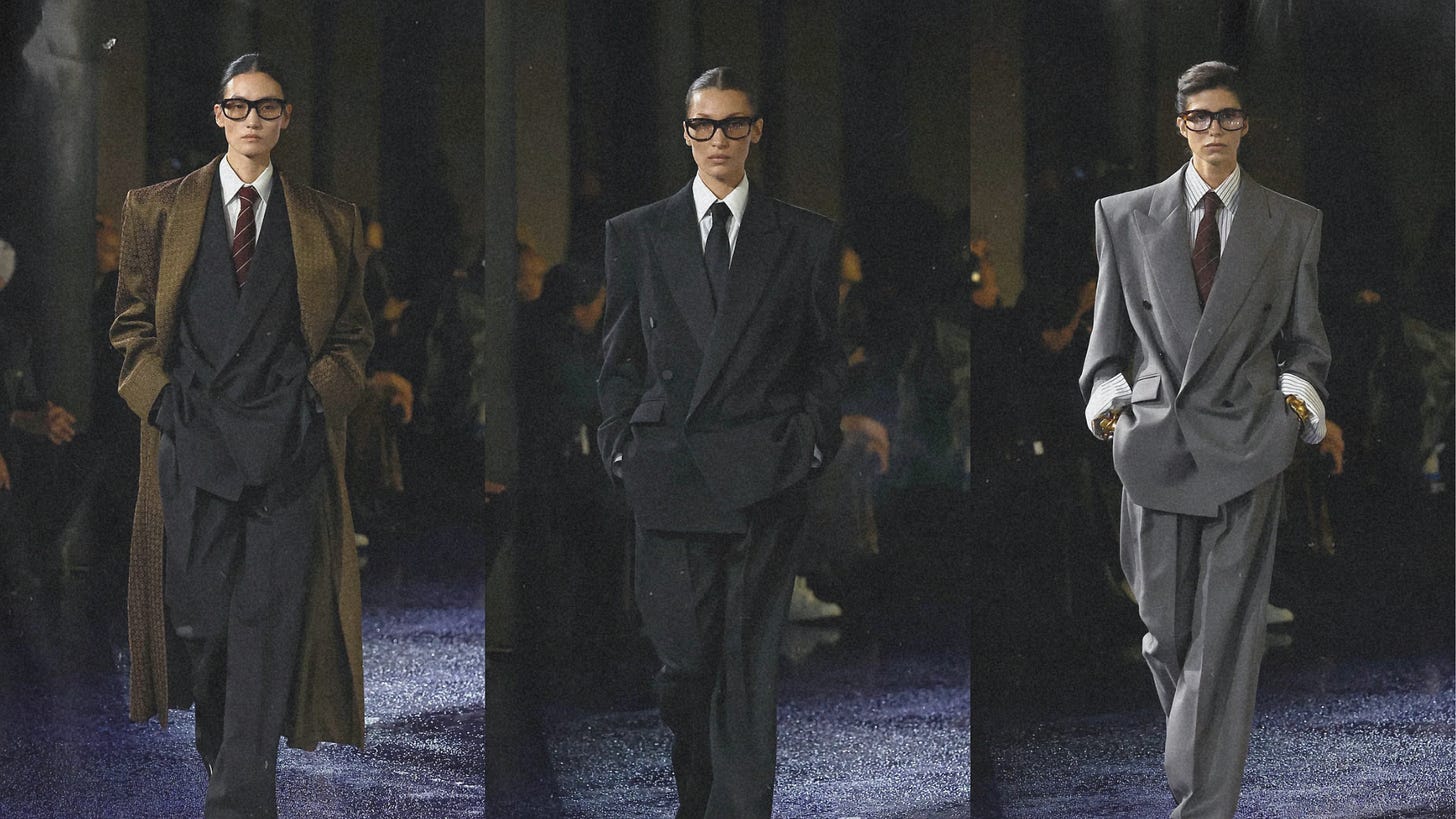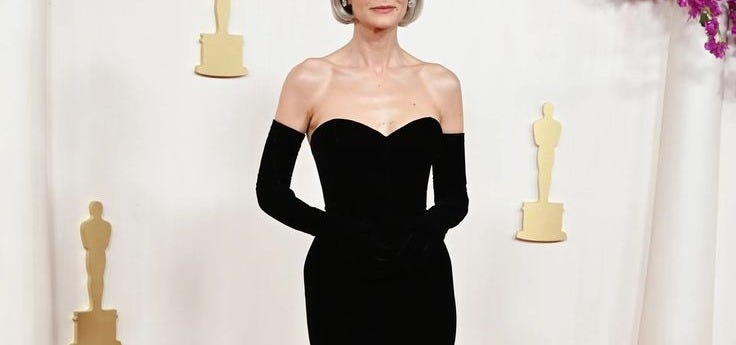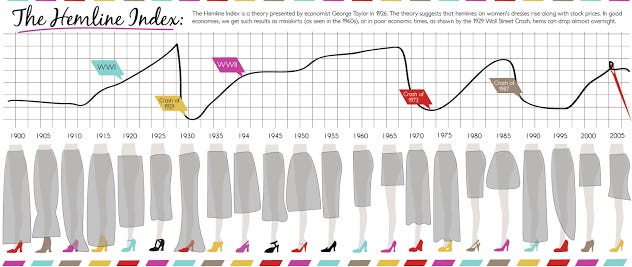skirt lengths and interest rates: an essay discussing our style and the economy
what do the lengths of our skirts and the economy have in common?

Longer skirts are having a moment — but is it just an aesthetic choice, or is there something bigger at play?
It is October 2024 as I put pen to paper, and one thing is for certain - it is not just the weather that is influencing us to ‘cover up’. For years there has been a theory that our desire for longer skirts, higher necklines and layered styling is actually due to the state of the economy.
Our style choices reflect the collective response to uncertainties we face today, connecting our fashion choices with the larger currents of culture and economics. In today’s climate, there has been a noticeable shift towards ‘modest’ fashion. Think Saint Laurent’s Spring Summer 2025 Runway collection.

As the meaning of luxury evolves, we seek comfort; not in extravagance, but in simplicity and stability. It’s the mind’s subtle way of telling ourselves everything is under control, even when it is not.
the great recession
Let’s go back in time. It is late 2008 and headlines are coming in fast with “housing market crumbles”, “banks on the brink of collapse” “unemployment rates soar”. The fashion industry is equally on the brink — retail giants report significant decline in sales and are slashing prices upwards of 70% to clear stock. With fashion fighting for its footing, the runway begins to push more gender-neutral designs. Maybe a bid to rationalise production levels and clear stock faster? Who knows.
What we do know, is vibrant colours, feminine structures, and lavish designs were no more. Enter structured silhouettes, muted colours, clothing that worked for the office and the home. Do not get me wrong, luxury items were purchased by those that could afford it, however, there was a conscious effort to avoid noticeable logos and prints. Sound familiar?
By definition, a recession occurs when there are three or more consecutive quarters of declining economic output, typically accompanied by rising unemployment.
While I will not speculate on whether we are in a recession as I type this, it would explain a lot; why celebrities and luxury brands are in their ‘quiet’ or ‘stealth wealth’ era and why statement jewellery seems distasteful to parade around the streets (or the red carpet).

Last year, the extremely obvious trend of quiet luxury, was mainstream, with searches for ‘quiet luxury’ skyrocketing 373% in May 2023. Shows like Succession, dubbed a masterclass in the art, revealed to the masses what the ultra rich were wearing. And we were fascinated.
This is history repeating itself yet again.
In times of economic uncertainty, the true meaning of luxury shifts from signalling wealth, to signalling stability or in some ways, survival. The trimmings fall to the ground, and excess is no longer ‘in’. Instead, a more understated approach rules the red carpet, the runway and the shop floor, leading us to believe the length of our skirts and the height of our necklines reflect deeper economic and social shifts, than meet the eye.
the great depression
World War One was a pivotal moment for women. Clothing became more practical — jackets were longer, and looser fitted, and the popularity in exaggerated waistlines of earlier decades began to decline. What would follow women’s contribution to the war, was their desire for more.
While history has a way of repeating itself, there is something to say about why the economic expansion that succeeded World War One, a time of economic turmoil, is described as ‘the Roaring Twenties’ both in the stock market and in style. Women’s skirts were shorter and there was more - gold, glitz and glamour.
The connection between fashion and the economy is not novel. In 1926, economist George Taylor introduced the ‘Hemline Index’, suggesting that skirt lengths rise when the economy booms, and fall when times are tough. A 2010 study, though not peer-reviewed, suggested that economic cycles influence hemlines, typically leading the trend by about three years.
I believe it is less about hemlines, but more about how we subconsciously process the worlds happenings. While the hemline index may seem outdated, the principle still applies: economic anxiety and fashion are undeniably linked. The vibrancy of the Roaring 20s came to a halt on October 29, 1929, when the stock market crashed. What followed was the Great Depression, and with it, hemlines fell dramatically.
Modest fashion and longer skirts have since re-emerged at various timestamps throughout history; World War Two, the 1970s oil crisis, and after the 2008 financial crisis.
the trendgeist’s take
One could argue, we are rebelling against the commonly disposable culture of fast fashion, by choosing to invest in timeless styles and quality fabrics, a nod towards more sustainable consumption. Perhaps, we are not just seeking to look the part, but to lean on durability, as a desire for stability, both in our wardrobes and in our lives.
Fashion has always been a reflection of the world around us and our clothes mirror that so intimately. While trends come and go, the resurgence of modesty feels cyclical, and I am sure we will be here again in a few years time.
The next time I reach for that long skirt or a turtleneck, I will be checking the S&P500. I think you should too.






Came from TT :)
Here from TT, this was a brilliant read.